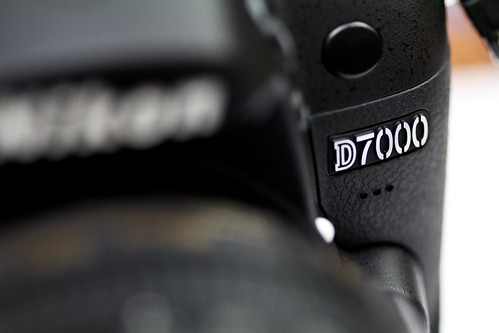I’ve spent a significant amount of time with the new Nikon D7000 as I was researching and writing my ebook user’s guide Nikon D7000 Experience. It has been interesting to contrast it with the recent Canon 60D, as they sit in a somewhat similar position in each brand’s current dSLR line-up.
They are both excellent cameras and are both highly customizable for you to set up for the way you shoot. But I have to say I’m incredibly impressed with the higher amount of customization options offered by the D7000. Nikon offers the opportunity for advanced shooters to fine-tune many settings of the D7000 – options that the 60D just doesn’t have.
Advanced settings of the Nikon D7000 include:
White Balance – many more fluorescent options and the ability to tweek any of the WB settings along the blue-amber and green-magenta axes – including the ability to make blue-amber adjustments on the fly without going into the menus by using the WB button. The 60D not only doesn’t offer this level of adjustment, it doesn’t even have a WB button on the body of the camera.
Frame Rate – The Continuous Low release (drive) mode can be set for between 1 to 5 fps. Canon only offers 3fps in Low Speed Continuous. This is not such a big deal on the 60D because High Speed Continuous is 5.3 fps. However with the Canon 7D, this would have been an incredibly helpful option. The 8 fps of High Speed is blazing fast, typically too fast for real life use as the scene barely changes from image to image yet the large files can quickly fill up a card. But then 3 fps is too slow for action use. I have long wished for a 5 or 6 fps option on the 7D.
Metering – With the D7000 you can change the size of the area metered in Center-Weighted Area metering mode if you wish for more or less precision or if you are working with a subject of a particular size. The camera can be set to meter a circle of various sizes: 6mm, 8mm, 10mm, 13mm, or even an average of the entire scene (Average will act like a very dumbed down Matrix (Evaluative) Metering and just average the entire frame and not take selected AF points into consideration). The 60D does not offer this ability but does offer Center Weighted metering mode and Partial metering mode (which meters a center circle that is 6.5% of the viewfinder). Both cameras offer Spot Metering for very precise metering.
Exposure – In the D7000 you can fine tune the default settings of each of the metering modes to slightly under- or over-expose. This is an adjustment done behind the scenes and not exposure compensation. This is something I would find very handy on my 50D because it always overexposes by about 1/3 a stop in Evaluative Metering mode. So instead of using -1/3 exposure compensation all the time, I finally settled on using Center Weighted Average metering. But with the D7000, you can fine tune the camera to always underexpose. For example if you were to have this slight overexposure problem in Matrix metering, you could fine-tune Matrix for -1/3 and then it would be fixed. You could use exposure compensation on top of that when necessary. You can also customize the controls for exposure compensation (EC) so that your EC adjustment applies to only the next photo taken or to all subsequent photos.
Autofocus – The D7000 offers AF Fine Tune (or AF Micro-Adjustment as Canon users may know it) to slightly fine tune the autofocus of multiple lenses if any of them are slightly back- or front-focusing. This feature was on the 50D but was disappointingly dropped from the 60D. The D7000 also allows you to choose from all the AF points or just 11 of them, which could be helpful to those just getting the hang of selecting their own AF point instead of allowing the camera to choose what it thinks you wish to focus on. (You should nearly always be choosing your own AF point!)
So as you can see, the D7000 offers many advanced customization and fine-tune options in the Menus and Custom Settings that the 60D just doesn’t offer. Keep in mind however that these are pretty advanced features, and if you are not going to be making use of them, don’t be swayed by them when choosing a camera.
For a more detailed comparison of these two cameras, see my post Nikon D7000 vs. Canon 60D.
If you would like to learn more about all the Menu and Custom Settings of the Nikon D7000 or the Menu items and Custom Functions of the Canon 60D, be sure to have a look at my ebook user’s guides for each of these cameras:
Nikon D7000 Experience – The Still Photographer’s Guide to the Nikon D7000
Your World 60D – The Still Photographer’s Guide to the Canon 60D
In these books I cover all of the menus and custom settings, along with their recommended settings for general photography and travel photography use. These kinds of settings are what make these cameras very powerful and precise tools that you can – and should – set up to work for the way you photograph. They are worth learning, understanding and making use of.
If you wish to compare the Canon 60D with the other Canon dSLRs, see this post Canon 5D vs. 7D vs. 60D vs. 550D/T2i and if you wish to compare the Nikon D7000 with the other Nikon dSLRs, see this post Nikon D7000 vs. D90 vs. D300s.


